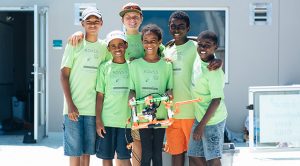About
History
BIOS DataBytes was launched in 2020 with initial support from the National Science Foundation (NSF) and in partnership with BIOS researchers Leo Blanco-Bercial and Amy Maas and the Biological and Chemical Oceanography Data Management Office (BCO-DMO). The goal of the initiative is to take data and core scientific concepts from researchers at BIOS and make them available to educators and their classrooms in a streamlined format. By utilizing curated data sets, educators can support their students with real data that highlight key oceanographic and atmospheric concepts and patterns. BIOS will build additional teaching and learning modules (“DataBytes”) and partner with local and international educators by sharing DataBytes through workshops, conferences, and social media platforms.
What are BIOS DataBytes?
BIOS DataBytes are designed to provide curated data sets that demonstrate core oceanographic and atmospheric concepts for students and educators.
Each DataByte consists of three core elements:
- A .csv file of simplified data on a specific suite of oceanographic and/or atmospheric phenomena that can be directly downloaded;
- Media and information on how the data were collected;
- Links to supporting educational resources and/or curated lesson plans
Data and Ocean Literacy
An ocean-literate person understands the essential principles and fundamental concepts about the functioning of the ocean; can communicate about the ocean in a meaningful way; and is able to make informed and responsible decisions regarding the ocean and its resources. Core to the continual process of building ocean literacy and success in a knowledge-based economy is working with datasets. Data come from an increasing number of streams in higher volumes than ever before. Fundamental to managing and interpreting these data is cultivating problem solving and critical thinking as fundamental skills for building confidence working with ocean data. BIOS believes that utilizing data to answer questions about ocean and atmospheric phenomena is at the heart of a twenty-first century skillset.


